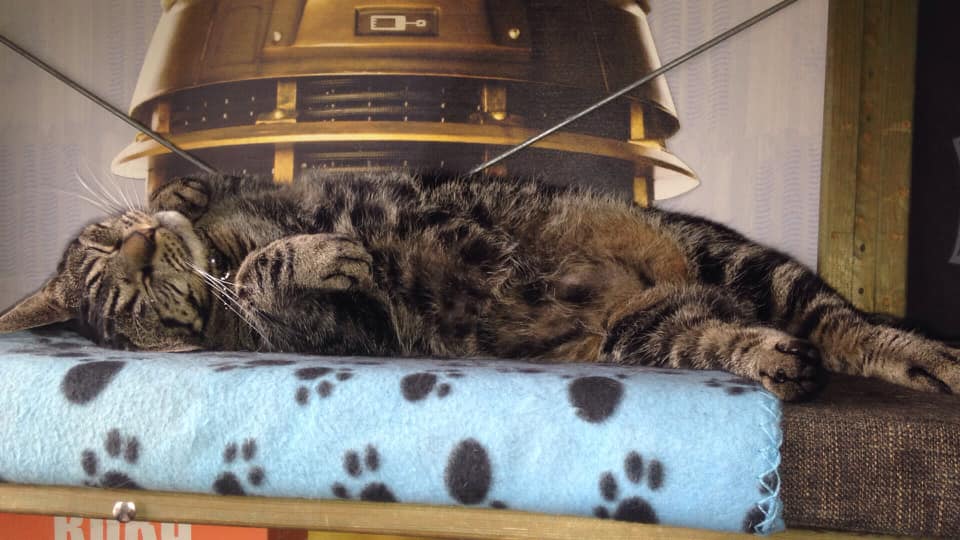I’m not scared….
Almost a year ago, a rather confused little personality joined our family in the form of a tabby girl.
She’d been mentioned to me once before previously as her former family stated she was toileting inappropriately and they were struggling to cope. Unfortunately, any suggestions to address the problem were not trialed and obviously the issues persisted. I was unaware of this until a second party contacted me about the same cat needing a new home or rescue space. After spaying, there were a few incidents in her foster home that her former family had stated regarding their reason for rehoming her. But the real issue wasn’t the inappropriate toileting; it was her fear aggression.
There’s a common misconception surrounding the term “fear aggression.” When people hear it, they tend to make the assumption that a cat would have to have been actively mistreated for them to develop the issue; that’s not accurate. Fear aggression can often illustrate a lack of the right form of socialisation, meaning they struggle with interactions.
Cats have extensive ways to communicate with each other, but a more limited range to convey information to us. There are obvious signs of happiness; a specific sound we quickly identify or their tail being held a certain way when they approach us. But it’s less simple for them to make us aware of negative feelings; pain or general unhappiness. Sometimes it will manifest in the form of a cat withdrawing. But with others, it will manifest in the form of aggression.
Tiny Tiger, as this beautiful girl is referred to in our home, exhibits the latter. From her behaviour, I had to establish theories regarding the root of the issue and address them. An example is her habit of “guarding.” Resources, caregivers, spaces. If any of the three other feline residents were to approach any of these factors, initially there would be a large amount of uncertainty from her accompanied by warning or aggressive noises. And with space, this wasn’t simply limited to the other cats in the home; if the humans who lived with her approached and she wasn’t sure of our motive, she would physically lash out at us. Months on, the situation isn’t perfect. She still has moments where she gets angry and defensive and the best course of action is to give her space to find a place in the house she feels secure, and simply let her anxiety levels reduce. But using anti-anxiety aids, ensuring the number of resources were increased (extra feeding and drinking areas) and giving her plenty of safe spaces, both high up or hidden to observe her surroundings, most of the time she is infinitely calmer.
The reason I’ve written this blog is because I think it’s greatly underestimated how much inadequate or inappropriate socialisation can impact a cats behaviour. The theory that “cats mostly look after themselves” has proven detrimental to so many cat/human relationships. Recognising a cat’s personality as quickly as possible and working with it to ensure they feel loved as a family member is vital if you want to develop a strong bond with your cat. There is a short piece written by the PDSA (accessible via a quick Google search) to give a few simple tips on helping a kitten to develop into a confident, well-adjusted cat.

